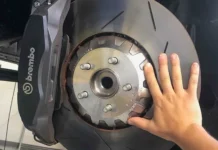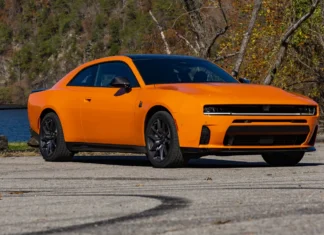SPONSORED CONTENT
Car modifications make your ride faster, louder, or just more you, but they can also change how your warranty, insurance, and liability work after an accident. Here’s a practical, no-nonsense guide to help you enjoy your build without losing coverage or getting tangled in red tape.
What Counts as a Car Modification
A modification is anything that changes your car from factory spec. Common examples include:
- Performance upgrades: ECU tunes, turbos, superchargers, cold air intakes, cat deletes.
- Suspension changes: lift kits, lowering springs, coilovers, sway bars.
- Wheels, tires & brakes: oversized wheels, low-profile tires, big brake kits.
- Exhaust systems: aftermarket cat-backs, muffler deletes, resonator changes.
- Lighting & electrical: LED retrofits, underglow, light bars, sound systems.
- Body styling: body kits, bull bars, spoilers, heavy tint, roof racks.
- Emissions-related parts: catalytic converter replacements, EGR deletes, or anything touching the emission system.
If it wasn’t there when the car left the factory, it’s a mod, and it can change how your car is viewed by your warranty and insurance company.
Warranty Myths vs. Reality
Myth: “Any modification voids my whole warranty.”
Reality: Under U.S. law (the Magnuson-Moss Warranty Act), a manufacturer can’t deny warranty coverage just because you installed aftermarket parts. They must prove the modification caused the failure being claimed.
For example, if an ECU tune overboosts and blows your turbo, that repair may be denied. But the same tune won’t void coverage for unrelated parts like your A/C compressor.
Smart move: Keep receipts, dyno sheets, and install photos. If a dealer says your warranty is void, ask them to document how the mod caused the issue. You have the right to ask for written proof.
Insurance and Vehicle Modifications
Insurance companies calculate premiums based on factory specs. When you modify your vehicle, that risk profile changes.
- Always disclose modifications. Undeclared mods can lead to higher premiums, reduced payouts, or denied claims.
- Ask about add-ons: Many insurers offer Custom Parts & Equipment (CPE) coverage for aftermarket parts. Standard limits are usually low ($1,000–$3,000), so add coverage if you’ve invested more.
- Consider agreed-value policies. Specialty insurers (like those covering classic or performance cars) let you set a payout value that reflects your car’s real worth, mods included.
Keep documentation: receipts, part numbers, EO stickers, install photos, and shop invoices. They’ll save you hours of stress if you ever need to file a claim.
Legal and Compliance Basics
Different states have different rules for what’s street legal. Here’s what to watch out for:
- Emissions compliance: In many states, especially those following California standards, aftermarket parts that affect emissions must have a CARB Executive Order (EO) number showing they meet emissions standards.
- Height and lighting laws: There are limits on headlight height, bumper height, and window tint darkness. Oversized tires or bright LED bars can get you fined if they exceed local limits.
- Safety standards: Parts that affect braking, steering, or visibility must meet federal safety standards (FMVSS). Always buy from reputable manufacturers.
Keep copies of EO numbers, receipts, and inspection reports. They’re your proof that the car is legal and roadworthy.
Liability After an Accident
If a modification contributes to a crash or worsens the damage, things can get complicated. For example, if a lifted truck handles poorly during an evasive maneuver or a non-compliant exhaust reduces emissions control, insurance investigators may argue that the modification played a role. That can shift some or all liability toward the vehicle owner.
Illegal or improperly installed modifications can also result in fines or affect injury claims. After significant upgrades, have a professional mechanic inspect the vehicle and document that it’s safe and compliant.
If you’re involved in a crash and your car or other driver’s car has been modified, determining liability and compensation can quickly become complex. Insurance companies often look for ways to blame the modification to limit or deny payouts. That’s where experienced accident attorneys, like the team at Steinger, Greene & Feiner, can step in, helping you prove fault, protect your rights, and negotiate fair compensation, even when modifications are involved. A quick conversation with a lawyer can clarify your position before you deal with insurance adjusters.
A Practical Playbook for Modded Car Owners
Before You Mod
- Research local laws and emissions rules.
- Call your insurer and ask how the change affects coverage.
- Choose reputable parts with proper certifications.
- Keep every receipt and document the installation.
After You Mod
- Update your insurer, send photos and a parts list.
- Keep a digital folder of receipts, EO certificates, and alignment or dyno sheets.
- Get a safety inspection if you changed suspension or brakes.
If You’re in an Accident
- Take detailed photos of the scene and your vehicle.
- Give your insurer full mod documentation to show transparency.
- If your claim or warranty repair is denied, ask for the written reason.
- Contact a personal injury attorney if the accident involves injury or disputed liability.
Car modifications don’t automatically void your warranty or ruin your insurance, but they do change how coverage and liability work. Your warranty can only be denied if a modification directly causes a problem, so keep records and know your rights. Insurance companies just want an accurate picture of your vehicle, which means you should always disclose and document your upgrades. Staying within legal and safety limits not only keeps you out of trouble but also makes life easier if you ever have to file a claim.
And remember that building a car that feels uniquely yours is part of the joy of driving. With a little planning, smart documentation, and attention to the rules, you can enjoy every mile of your custom ride with confidence.






















